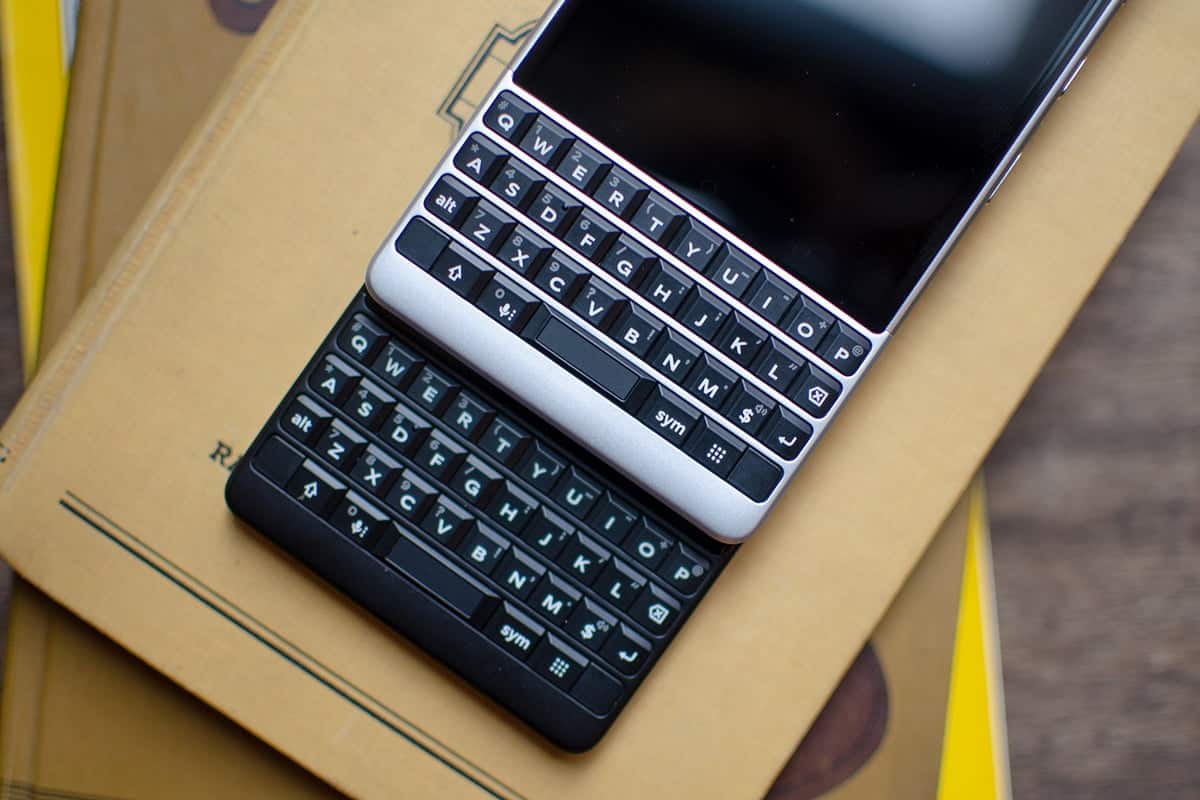
When Gareth Hurn, Global Device Portfolio head at the BlackBerry Mobile division of TCL Communications, walked into a design meeting a few years ago, he took a stack of phones with him. He had one particular phone in mind to be a benchmark device for the team: The Blackberry Bold 9900.
Hurn wanted to emulate the typing experience from that device — his favorite BlackBerry phone — for the latest project being discussed. This phone would eventually become the BlackBerry Key2, showing that even from day one, it has been a true BlackBerry at heart. After all, TCL Communications licenses the BlackBerry brand name and manufactures the hardware, while the software and security is handled by BlackBerry Limited in Canada.
“We obsessively went into detail on how to make this the perfect keyboard experience,” Hurn told Digital Trends at the Key2’s launch. ”When people pick up the Key2 and start typing, the larger keys and less slippery matte finish really help introduce people to typing on a physical keyboard.”
All the while, a Key2 was in his hand, and his fingers often grazed the keys as he spoke. It’s no easy task replicating the 9900’s feel. Getting the tactility just right takes time, effort and thousands of humans and artificial key presses throughout the test period.
“There’s something about the physicality,” continued Hurn on how pleased he was with the Key2’s feel. “It’s like holding a magazine, a book, or putting on a vinyl record. It’s something physical, with a different feeling over a something digital.”
Referring back to the Bold 9900 inspiration, he said, “I love that we were able to reinvent that keyboard.”
Reinvent? Is that the right word? Definitely. It’s easy to forget that in 2011 when the Bold 9900 was in the hands of eager mobile typists, the keyboard was just a keyboard. The team couldn’t lift a Bold 9900 keyboard out of the phone and put it in the Key2. Times have changed, and there is a whole lot more tech under the keyboard than ever before. The Key2 has a complex software layer, a capacitive surface, and gesture controls.
Integrating this, and retaining the desired feel and “springiness” that Hurn so loved from the 9900, meant everything from the size and shape had to be subtly altered. Aside from the 20 percent increase in key size and redesigned frets, great attention was paid to the bevelling on the keys. One Key2 gesture lets you “flick” words from the predictive list onto the screen, and doing so requires the keys to have the right indentation and balance, making that flick fast and natural.
Get it wrong, with a bevel that’s too pronounced, and it’s not fluid enough. Hurn’s pleased with the Key2, saying it strikes the right balance between paying homage to the Bold 9900’s keyboard, and the technical necessities of the cutting-edge keyboard on the Key2.
HOMAGE
It’s fascinating to hear how TCL Communications’ BlackBerry division continues to pay attention to BlackBerry’s past mobile endeavours, something it did with the KeyOne too, but in a different way.
“The KeyOne was more of an emphasis on something traditional,” Hurn said, noting the modernity of the Key2’s design. “On the KeyOne, we concentrated on doing something that resonated with our core audience, and the design intent was safer.”
But the KeyOne found a larger-than-expected degree of success and attracted many other people. Hurn said 50 percent of KeyOne buyers came from other Android or iOS devices. Will the Key2, which draws perhaps even more deeply from BlackBerry’s roots, continue to appeal to more people? The keyboard is the phone’s major differentiator, outside of the desirable security and privacy features. Hurn is confident about the Key2’s wide appeal.
“With the Key2 the goal was to listen to customer feedback,” noting the reduced weight and increased performance over the KeyOne, and drawing attention to the new design which he said was influenced by the silver BlackBerry Passport, providing, “an elegance and simplicity, instead of the gloss of the KeyOne.”
More importantly, although BlackBerry’s heritage is deep inside the Key2 and directly influenced the keyboard feel, in our early use of the phone, we found it considerably more accessible to physical keyboard newcomers than the KeyOne. This is crucial, and we asked Hurn what makes the Key2 so tempting for those used to touchscreen keyboards.
“We use a laptop to type anything of substance, not a tablet,” he said, explaining that on a laptop, “I know what keys I’ve pressed, it’s accurate, and the display is entirely focused on the content and not overtaken by a virtual keyboard.”
Hurn believes, “it’s not such a leap,” to go from the no compromise approach of a laptop to the Key2, thus avoiding the pitfalls of typing on glass. But surely, phones with physical keyboards are dead, right? BlackBerry didn’t disappear because people fell out of love with physical keyboards. Instead, Hurn said the maker wound up in trouble because the operating system didn’t have apps that people wanted to use.
The Key2 may pay homage to its forebears, but it’s definitely a thoroughly modern smartphone everywhere else.
That’s all changed with the Key2. It runs Android 8.0 Oreo, and therefore has all the apps you could want. It also has a keyboard that pulls in the feel from an incredibly successful BlackBerry device from the firm’s past peak, and then adds a innovative software and gesture layer over the top. The Key2 may pay homage to its forebears, but it’s definitely a thoroughly modern smartphone everywhere else.
The Key2 goes on sale at the end of June, and while we’ve already spent some time with the device, our full review will come soon.

